Last updated on
Fleas cannot sustain a liveable environment on leather couches due to the material’s non-porous nature, as it doesn’t provide the warm, fibrous habitat fleas need.
Fleas, those pesky little insects, can indeed find a home on your beloved leather couch, but not for long. These minuscule pests prefer environments that are warm and humid, with a host to feed on, conditions that a leather couch typically does not provide.
However, if a pet infested with fleas jumps onto the couch, some fleas may temporarily settle there. The good news is, due to the inhospitable nature of leather for these pests, they won’t last long.
Keep reading to discover effective methods for ensuring your leather couch stays flea-free, along with preventative measures to keep these unwanted visitors at bay.
Key takeaways:
- Fleas cannot sustain a livable environment on leather couches.
- Fleas can temporarily settle on leather couches if brought in by pets.
- Leather upholstery provides hiding spots for fleas.
- Fleas can survive for a short while on leather couches.
- Effective methods to eradicate fleas on leather couches include vacuuming, using diatomaceous earth and baking soda, steam cleaning, and professional pest control.
Table of Contents
Fleas’ Ability to Live On Leather Couches
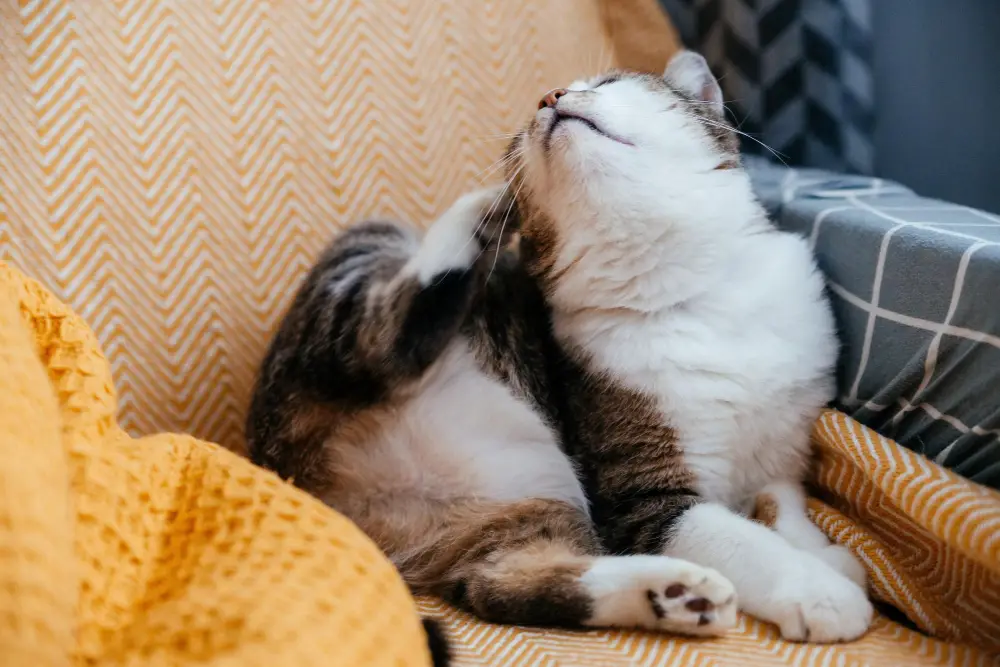
No surface is completely impenetrable for fleas, and that includes leather couches. While these pests might find it more difficult to nest in the smooth, non-fibrous material, they can still reside on the surfaces. They can easily be transported onto your couch by dropping off from your pet’s fur or from any other infested fabrics in your home.
The leather material does not necessarily provide sustainable conditions for fleas to thrive because it lacks the warm fur or fabric environment they typically favor. That said, they can survive for a short while on the couch while looking for a better habitat or host. Additionally, the small crevices or cracks in the leather could serve as temporary hiding spots for these pests.
Moreover, the eggs laid by the fleas can fall off your pets and onto the seats, rolling into the crevices of the couch. Although they may not hatch on the leather, they can hatch if they fall on carpet or fabric. Therefore, it’s important to treat the leather, its crevices, and the immediate surroundings to eradicate any infestations completely.
The Propensity for Fleas to Hide in Leather Couches
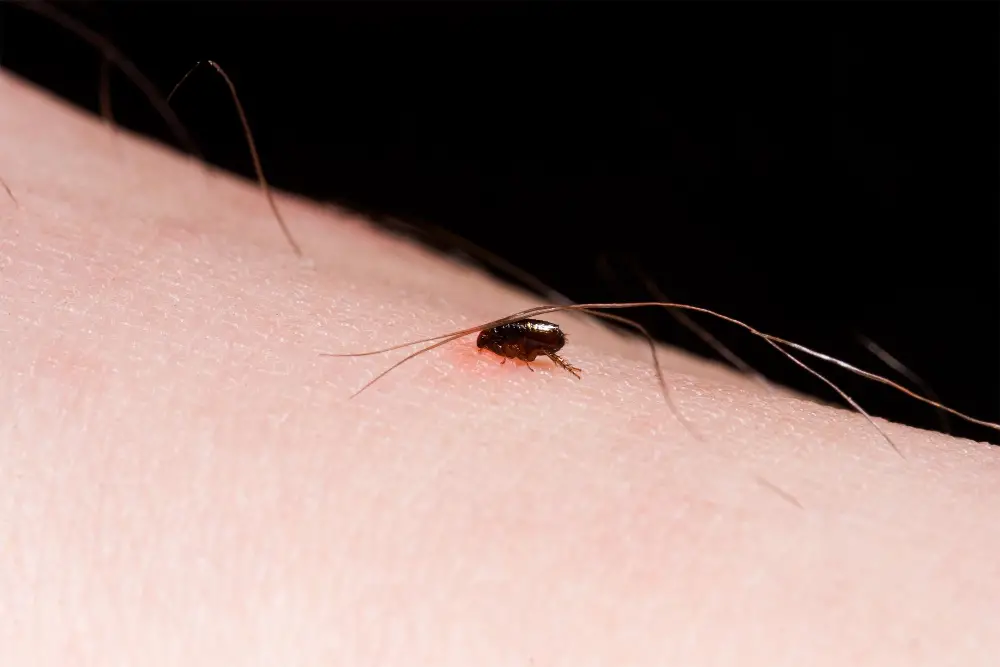
You may be surprised to learn the areas in your home where fleas can reside. Leather furniture, for instance, provides an appealing hideout for these pesky bugs. Their tiny and flat physical structure allows them to squeeze into cracks and crevices, a common characteristic of leather upholstery. This fact, combined with the warm and dark environment that leather pieces can provide, can make your couch an ideal living space for them.
Additionally, the presence of humans or animals frequently sitting on the furniture can continuously feed fleas, thus, making your sitting area a satisfying buffet. Overall, leather couches offer both hospitability and availability of food sources – a perfect combination from a flea’s perspective.
The Lifespan of Fleas On Leather Furniture
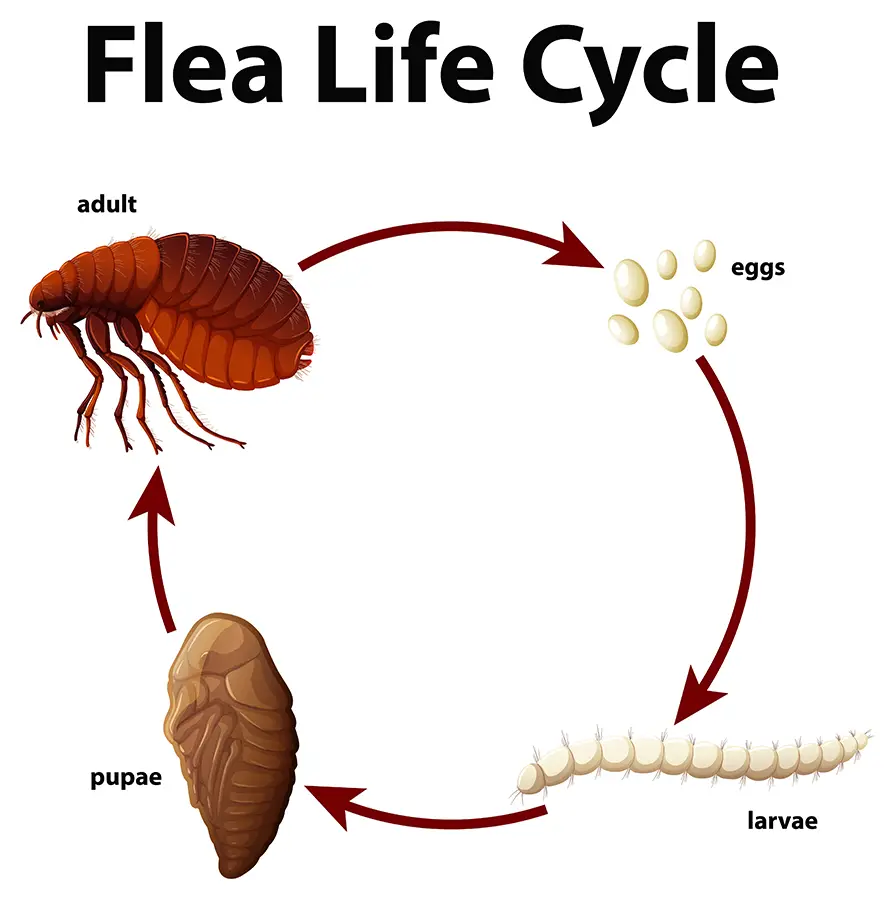
Finding a flea on your favorite leather seat can be both unsettling and irritating. Though these tiny pests prefer living and breeding on animals, they can indeed survive on a leather couch, albeit for a limited period.
Once a flea hops off its host on to your couch, its lifespan comes into question. The average flea can live up to 100 days without a blood meal. But the lack of ideal conditions on your couch may curtail this.
Leather doesn’t provide the same warmth and fur-like environment that hosts such as cats and dogs do. So adult fleas aren’t likely to live long on them.
In contrast, flea larvae can exist in the crevices of your couch for about 20 days by feeding off droppings left behind from adult fleas. Despite these challenges, they still pose a nuisance and can hop back on your pets or even you, given the chance.
Without regular cleaning and treatment, this cycle could potentially continue, challenging your comfort and the health of your pets. Therefore, it is essential to understand how to tackle these tiny invaders.
Methods to Eradicate Fleas On Leather Couches
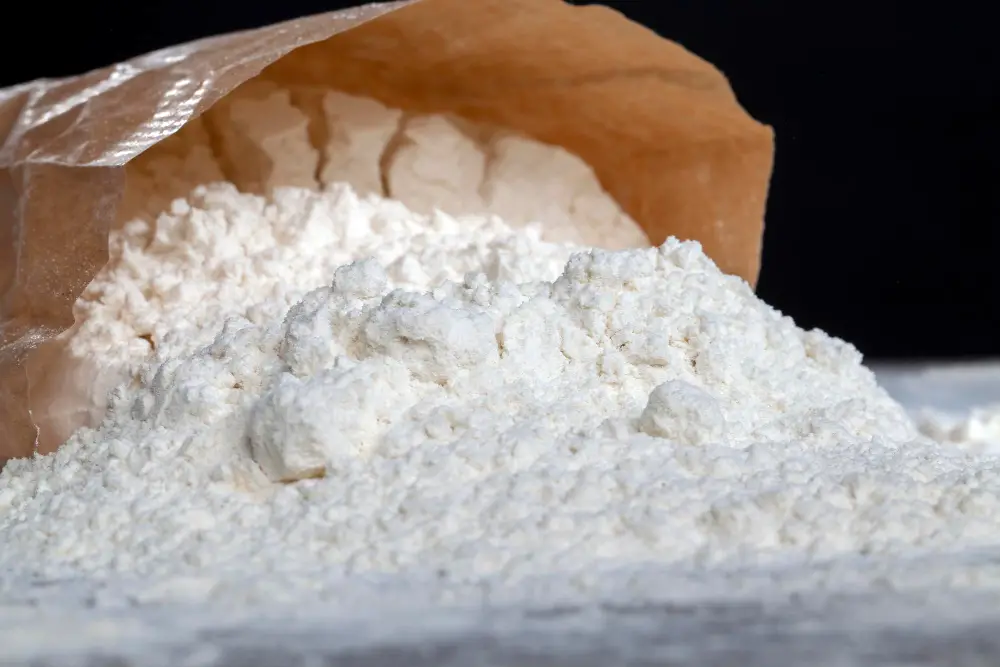
Proceeding to the critical part of flea eradication, it’s important to approach it in a systematic and sensible way.
Firstly, conduct a thorough vacuuming of the couch to remove any fleas and eggs. Be meticulous in reaching all corners and crevices, by using quick, short bursts to agitate and force the fleas out of their hiding spots.
Afterward, apply a combination of diatomaceous earth (DE) and baking soda to the couch. Leave it on for several hours before vacuuming it up. DE effectively dehydrates the fleas, leading to their demise, while baking soda enhances the effectiveness of this desiccation process.
Using a steam cleaner can denote an essential step if the infestation persists. The high temperature of steam can kill the fleas. However, steam can cause color fade or damage to leather if it’s not used carefully. Hence, use it in an inconspicuous area first to check the leather’s reaction.
It’s admissible to use flea control products, such as sprays or insect growth regulators, but ensure they are safe for use on leather furniture. Always follow the application instructions on the product label. Should the infestation persist, professional pest control may be necessary.
Lastly, it’s beneficial to implement regular cleaning and vacuuming routines to prevent future flea infestations on your leather couch.
Remember, depending on the severity of infestation, one method may work better than the other. Overall, eradication methods involve treatments that are safe for the couch material, effective for eliminating fleas, and, ideally, preventive to stop a future infestation.
The Effectiveness of Vinegar in Managing Fleas On Leather Furniture
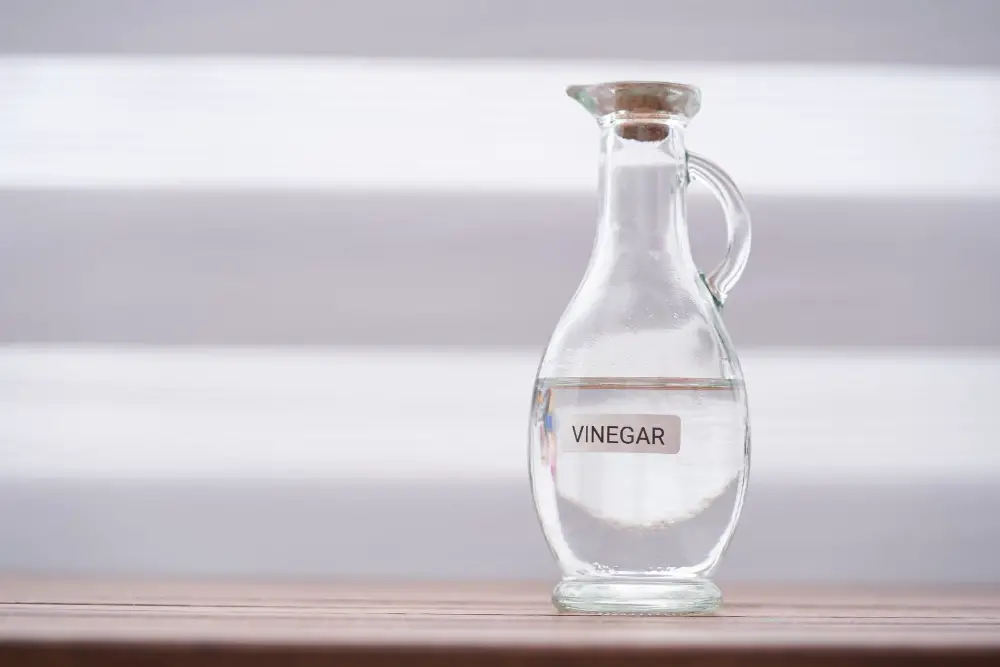
Harnessing the natural acidity of vinegar, it can be effectively utilized to deter fleas. This inexpensive, household product has an acetic acid solution that is hostile to fleas, making it a potential tool in flea management. However, care is essential on leather due to its delicate nature.
1. Typical Usage: A mixture of equal parts white vinegar to water sprayed lightly on the surface can deter pests. Avoid soaking the leather as this can cause damage.
2. Efficacy: While vinegar discourages fleas, it doesn’t kill larvae or eggs. Combining vinegar applications with thorough vacuuming could enhance results.
3. Precautions: Always spot-test a small, inconspicuous area of your leather furniture before broad application to ensure the vinegar solution doesn’t discolor or damage the piece.
Surprisingly, your kitchen pantry holds solutions to flea problems, such as vinegar, but remember the key: it’s a component, not the sole remedy. Regular cleaning and mindful strategies are indispensable in the fight against fleas.
How Lysol Spray Can Be Used to Combat Fleas On Leather Furniture
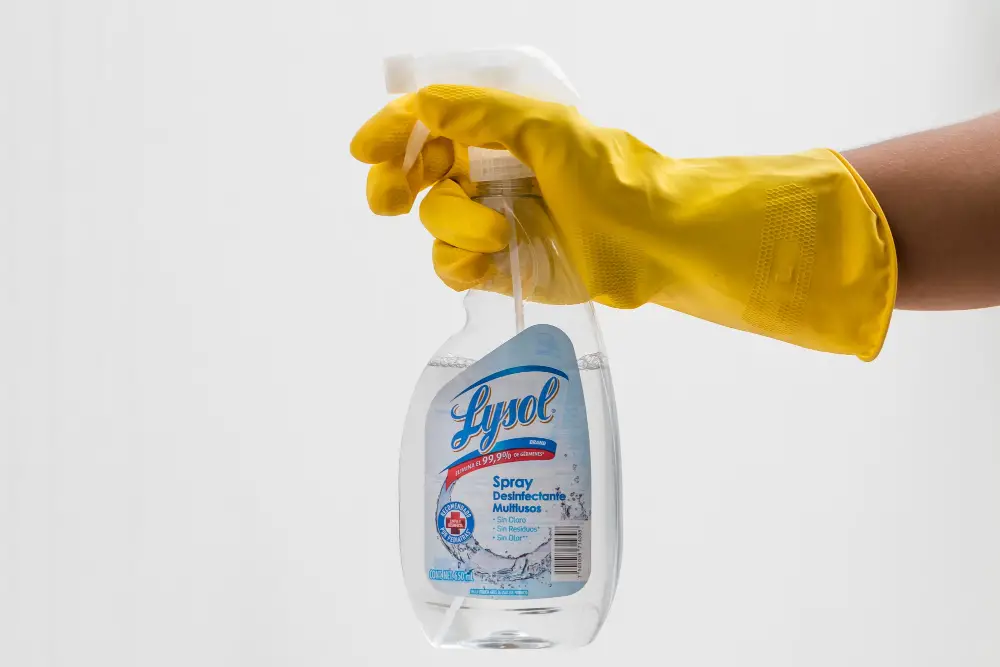
Lysol doesn’t just keep your home smelling fresh, but it’s also an efficient weapon against annoying pests, wonderfully effective in tackling fleas. When using Lysol, it’s essential to consider a few key points.
Firstly, Lysol kills both adult fleas and their larvae, breaking the life cycle and helping you reclaim your couch.
The process is simple; lightly spray the entire surface of the couch, including all cracks and crevices. Make sure you have proper ventilation. Let it sit for a few minutes, and then wipe with a clean, dry cloth.
It’s crucial to remember, while Lysol is effective against fleas, it cannot penetrate deep into the couch the way professional treatments can. It works best for mild infestations or a stop-gap until professional treatment.
Lastly, Lysol should not replace your regular cleaning routine; it is an additional measure to help keep fleas at bay. Implementing comprehensive cleaning procedures regularly will increase the effectiveness of using Lysol against fleas.
Various Flea Treatment Options for Leather Furniture
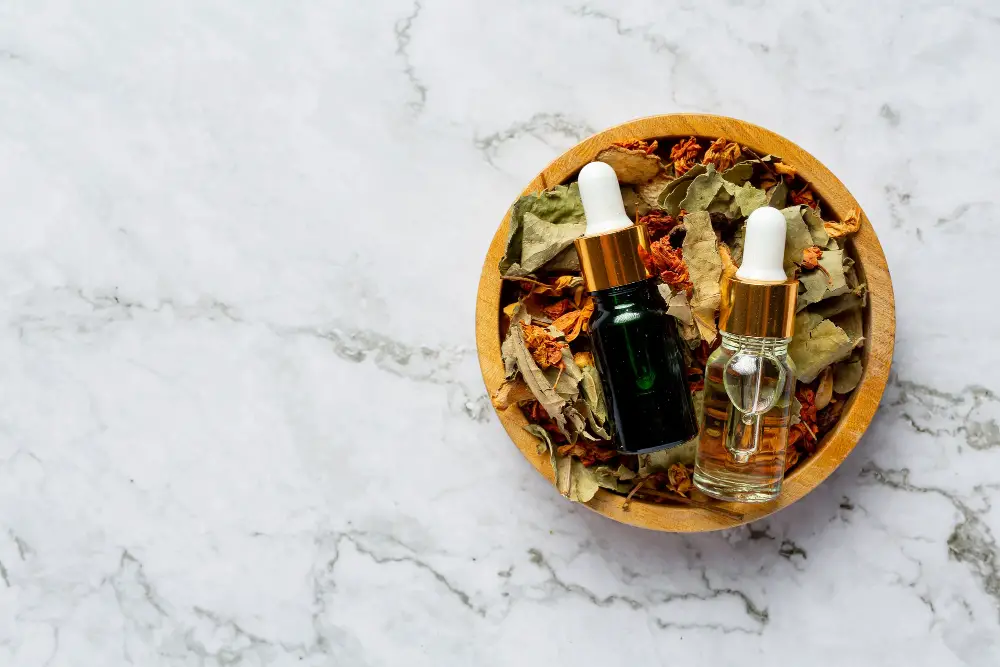
When dealing with flea infestations on your leather furniture, a multi-pronged approach is often most successful. Here are some methods.
1. Flea-Proof Sprays: Often the first port of call, these sprays kill fleas on contact and deter others from settling.
2. Essential Oils: Certain oils, like lavender and cedarwood, are natural flea repellents. Dilute them with water, and spray your leather couch lightly and regularly.
3. Vacuuming: Regular and thorough vacuuming can eliminate fleas of all life stages. Remember to dispose of the vacuum bag or clean the receptacle immediately to prevent the pests from returning.
4. Diatomaceous Earth: This non-toxic powder kills fleas by dehydration. Apply sparingly to your couch and vacuum off after a few hours.
5. Professional Pest Control: For severe infestations, professional services can offer strong treatments to eradicate fleas entirely.
Remember, each situation is unique; a combination of treatments may be needed to effectively handle your infestation.
Visual Identification of Flea Eggs On Leather Furniture
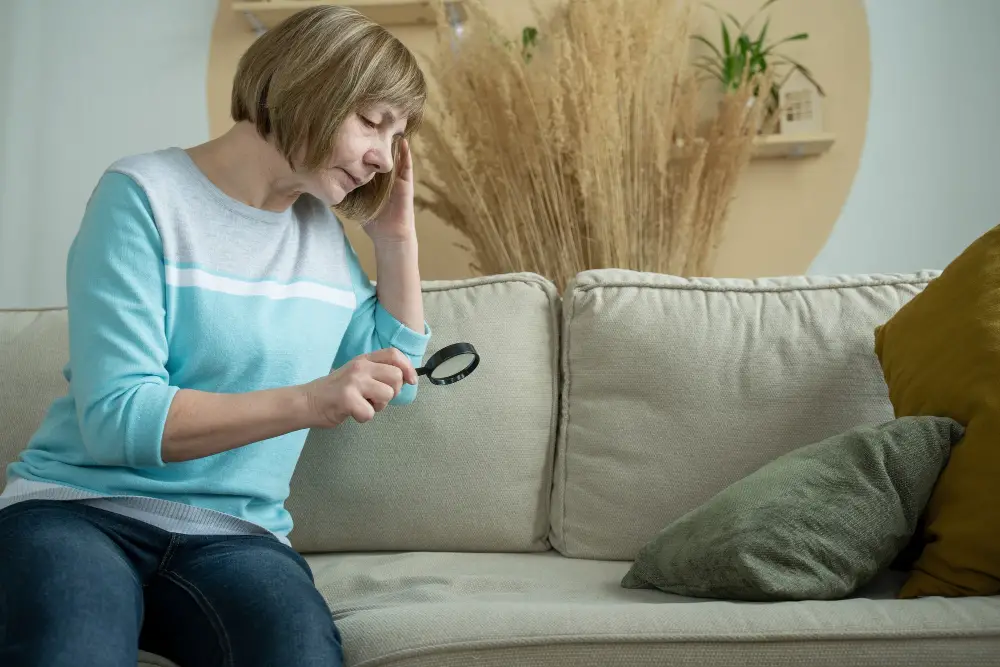
Though challenging due to their minute size, visually identifying flea eggs can be pivotal in confirming an infestation. Flea eggs aren’t easy to spot being barely 0.5mm in size and white or clear in color. They often get lost amidst the textures and patterns of leather furniture, giving the illusion of being dandruff or dust particles.
For successful detection, several tools may assist, including a magnifying glass or a bright torch. Use these implements to thoroughly inspect your leather furniture, paying particular attention to crevices and seams where eggs could hide.
Always keep in mind that a severe infestation might require expert assistance. Should you find any suspicious particles, collecting a few samples on a piece of clear tape to show a professional could be a prudent step.
Strategies to Protect Leather Furniture From Flea Infestations
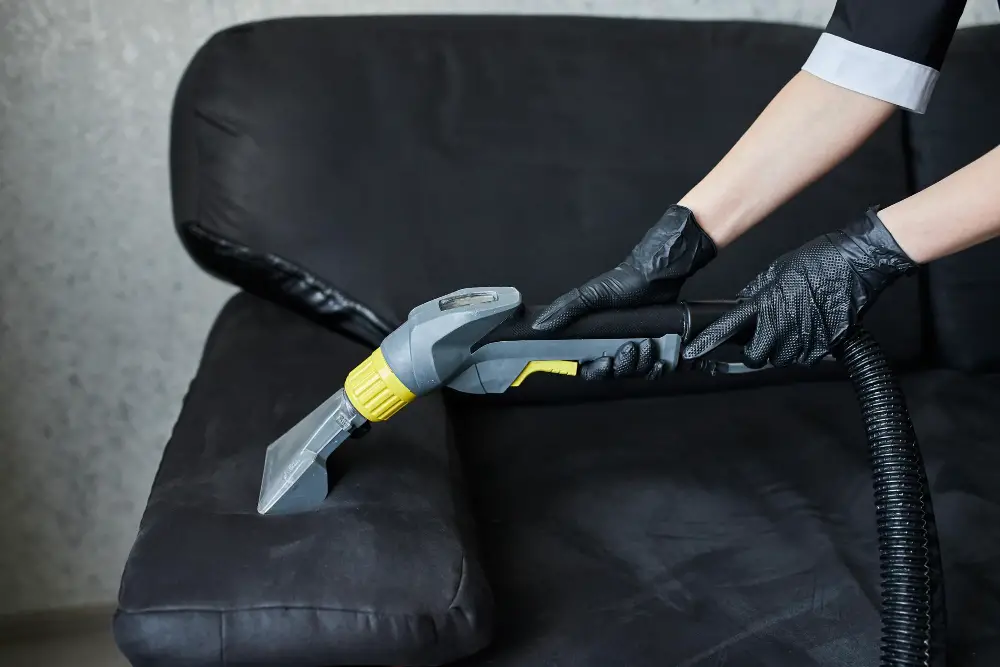
Regular cleaning is the first step in safeguarding your leather furniture against a potential flea infestation. Fleas can be warded off by maintaining hygiene and removing possible breeding grounds. A vacuum cleaner with a high-efficiency particulate air (HEPA) filter can be particularly effective as it can suck up adult fleas alongside their eggs and larvae, reducing the risk of future infestations.
Introduce routine inspections of your leather furniture, especially if you have pets. Being vigilant gives you a chance to spot the early signs of infestation. This could be spotting adult fleas themselves or identifying traces of their droppings.
Another preventive measure is the utilization of flea repellents safe for leather. Some essential oils, such as lavender and lemongrass, are known to repel fleas effectively. Mixing a few drops of these essential oils with water and lightly spraying it onto your leather couch not only provides aroma but also serves as a line of defense.
Lastly, consult with a professional pest control service for an in-depth analysis and more specialized treatment options. They possess expertise in dealing with detailed nuances like leather preservation whilst ensuring fleas are comprehensively expelled.
Guidelines to Effectively Get Rid of Fleas On a Leather Couch
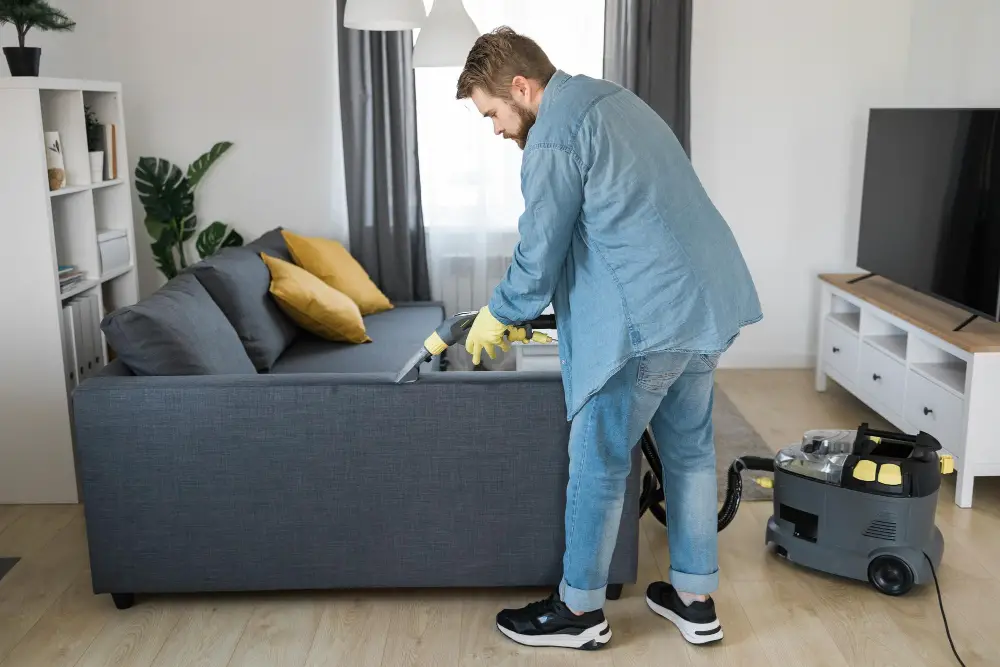
To successfully eliminate fleas from your leather couch, careful execution of steps is necessary. Start by vacuuming the entire piece thoroughly. Inspect the crevices and seams for any signs of fleas or their eggs and remember to regularly dispose of the vacuum bag to prevent reinfestation.
Next, use a flea spray specifically designed for furniture. Spray evenly covering all surfaces. Do pay attention to the type of spray you’re using to ensure it’s harmless to leather.
An additional step, though not essential, would be to use a steam cleaner. The heat effectively kills fleas and their eggs. However, avoid over-steaming as it can damage the leather, ensure to follow the manufacturer’s instructions.
Finally, preventative measures such as regular vacuuming and the use of flea control products for pets can effectively reduce the risk of future infestations. Always remember that addressing fleas involves not only cleaning your leather couch but treating all potential sources.
The Possibility of Fleas Existing On Furniture Without the Presence of a Host
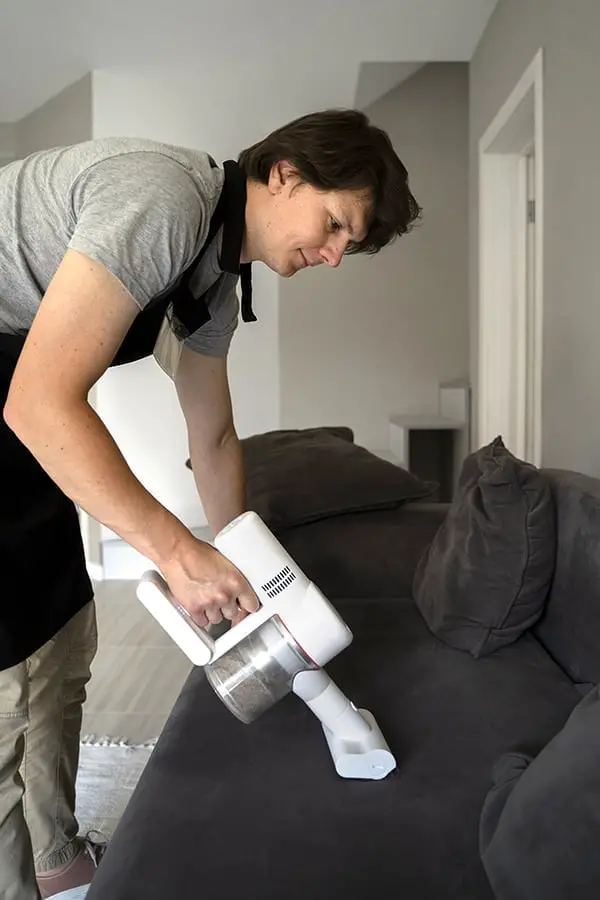
Without a host, fleas can indeed survive on your furniture, although their lifespan might not be as lengthy. They are especially capable of this when in their larval or pupa stage, cocooning themselves in a sort of hibernation period. It’s at this stage they can remain dormant for months at a time, waiting for the vibrations or heat that signify a host’s presence to trigger their “awakening.”
In fact, research has shown that fleas can survive for about 100 days without a host if the conditions are favorable. This could mean that even if your pet or any other host isn’t present, both adult fleas and flea eggs could remain a lurking problem on your furniture.
Remember, cleaning is integral to getting rid of these guests. Regular vacuuming, focusing particularly underneath and between the parts of your leather furniture, can suck up these dormant interlopers. Apply a natural flea killing agent or an insect growth regulator to keep them under control between cleans.
It’s important to note that while it’s unusual for fleas to choose leather due to its inhospitable environment, there’s some risk if your pet routinely lounges there, shedding flea eggs that eventually drop onto it. Regular cleaning, treatment, and a keen eye will help keep this risk at a minimum.
Common Questions About Leather Furniture and Flea Infestations

Often, many wonder about the dynamics of flea infestations on leather furniture. Here are the answers to some common queries:
1. Must there be a host present for fleas to thrive? Although fleas feed on hosts, they can stay alive on non-host surfaces like furniture for up to 100 days.
2. Can leather’s smooth surface deter flea infestations? Fleas can tacitly still infest due to the hides and crevices present in leather.
3. Is it challenging to spot fleas on leather furniture? Fleas are small and can blend easily with some leather shades, making detection tough. A closer inspection would be needed.
4. Can regular use of leather furniture deter fleas? Not necessarily, fleas can still lay eggs and these eggs can survive without a host for weeks.
Remember, awareness is the first line of defense. By understanding these points, you are well on your way to protecting your leather furniture from potential flea infestations.
FAQ
How do I treat a leather couch for fleas?
To treat a leather couch for fleas, clean the furniture with water and soap, then sprinkle diatomaceous earth all over it, ensuring it reaches into cracks and crevices, while taking precautions for personal safety by wearing protective goggles and a mask.
Can you use flea spray on leather sofa?
No, using a flea spray on a leather sofa is not recommended as it can damage the finish and discolor the leather.
How long do fleas live on couches?
Adult fleas can live roughly a week on a couch, but can turn it into an infested zone by laying thousands of eggs.
What natural remedies can I use to deter fleas from my leather couch?
To deter fleas from your leather couch, consider using natural remedies such as washing the couch with a mixture of water and vinegar, applying a mixture of essential oils like lavender or cedarwood, or placing a DIY herbal flea spray made with witch hazel and lemongrass, rosemary, or peppermint oils.
Do I need to treat other furniture near a leather couch infested with fleas?
Yes, all furniture near a flea-infested leather couch should be treated to avoid potential spreading of the infestation.
Can professional upholstery cleaning eliminate fleas from leather sofas?
Yes, professional upholstery cleaning can help eliminate fleas from leather sofas.




